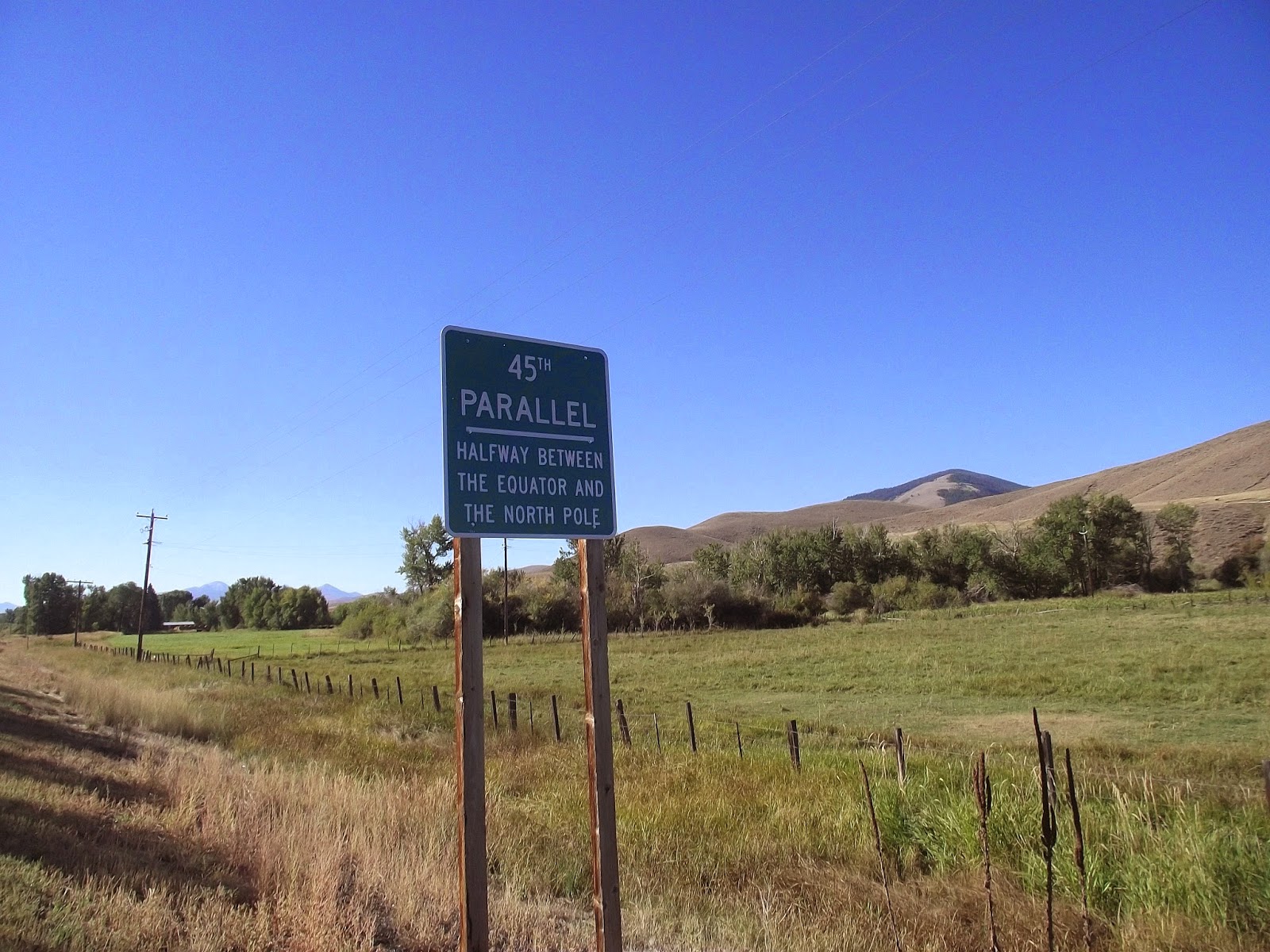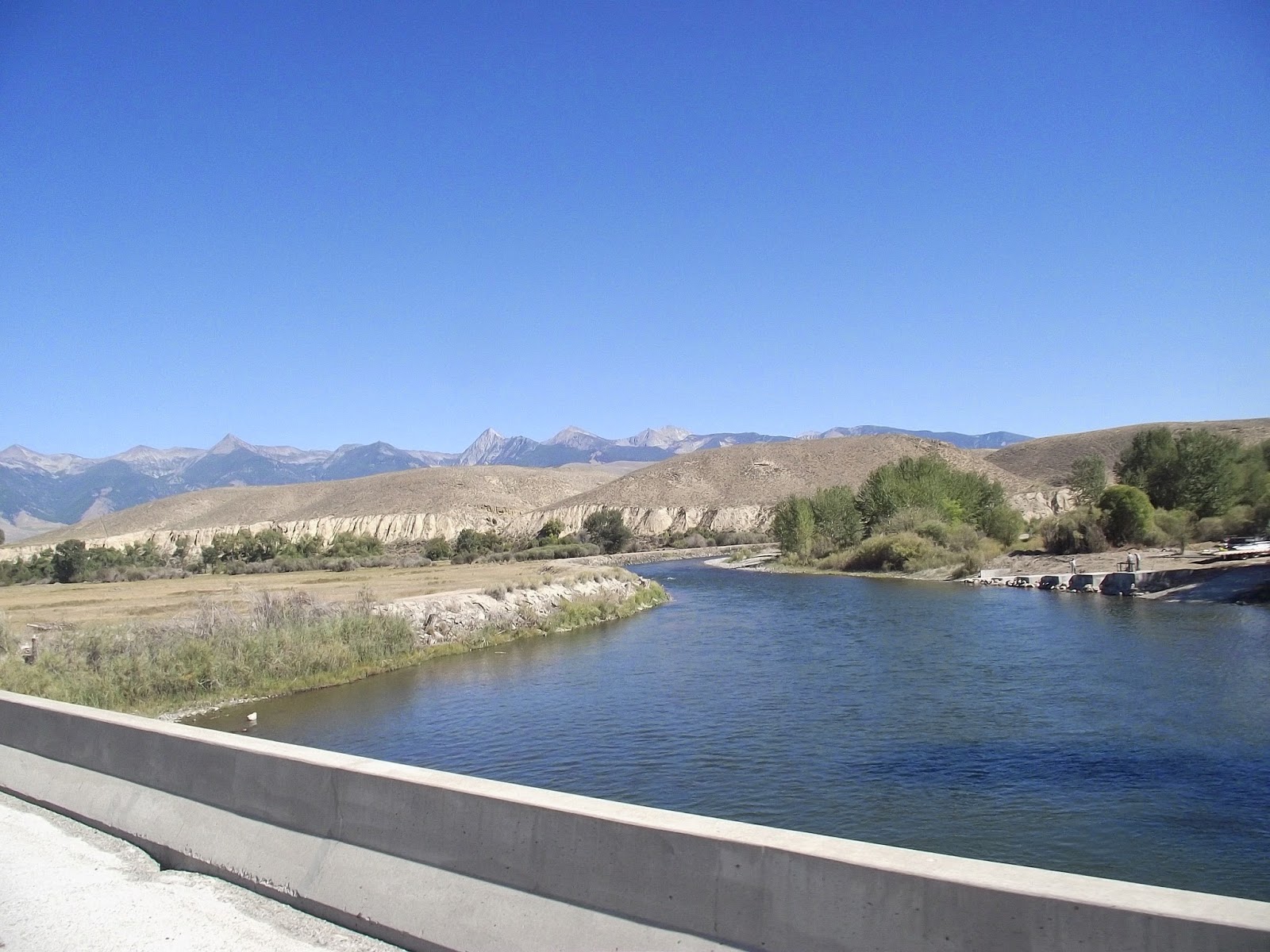The day I
should have had in Missoula would have started with me waking up to a perfect sunrise above
my campsite, not a freezing fog.
If it were that
perfect day, I would have pondered the ethereal beauty of the moment and felt
reassured that my bike trip was a chance to reconnect with simple pleasures
that most people divorce themselves from as they go about their day-to-day
lives.
Then I would
take my camera out from a dry place, where it hadn’t been drenched by rain that
soaked into my partially collapsed tent, to take a memorable picture of the
moment. If it had been my perfect day in Missoula, my camera wouldn’t have been
busted forever, and I would have plenty of stunning pictures to post from the
rest of my trip.
On the day I
should have had in Missoula, I would have cooked myself a hardy breakfast off my
stove, not grudgingly swallowed peanuts and bread. Nor would I have
dreaded the 20-something miles I had to pedal to get into town.
No. On my
perfect day in Missoula, I would have felt energized and inspired by the
distance I’d traveled so far.
Both my real and ideal days share my goal of kicking back a little. I'd have a beer with a good plate of food and mingle with those fixie-riding hipsters who populate the town, even if I'd normally ridicule them for being fixie-riding hipsters.
Both my fantasy
day in Missoula and the day I actually had would be colored by the fact that
this was a place I’d visited senior year in college when my thesis on contemporary Irish lit was the center of my world. I got a free
ticket to present my work at the National Collegiate Undergraduate Research
convention at the University of Montana.
Right after I
finished speaking, I decided to do the hike up the hill to the university’s
famous concrete “M.” Then I kept going to the top of the 5,000-foot Mount
Sentinel in my khakis, tie and loafers. It hadn’t been so great for the
clothes, but it’d been a great time.
If I’d had my
perfect day in Missoula, I’d have done the hike again just for kicks, not call
it off on account of rain and that I had other stuff on the to-do list.
If it had been the day I
should have had in Missoula, the county would have finished the bike path going
all the way to town and I wouldn’t have ended up riding in the highway margin
again with traffic kicking up spray.
If that sounds
like too much to wish for, I’ll dial it back and say that I wish I’d shown up
any other day of the week but Sunday.
Then when I
happened upon the Adventure Cycling Association’s national headquarters on East
Pine Street, I would have gotten solid advice about the roads ahead,
maybe even bought one of their guides, which would have information about where
to camp and other stuff that would have helped in the days ahead.
On my actual
day in Missoula, the headquarters was closed, but at least they had a map that listed bike
shops and breweries that I could hit in town.
I peddled
through the cold and tragically real drizzle to a bike shop that was closed
(surprise!) on a Sunday. Another bike shop was open, but not fully staffed for
the weekend and didn’t have the time to give to my gears, squeaky axle and
worn-down brakes.
On my perfect
day, I wouldn’t have lost my balance at an intersection and struggled to pick
my fully-loaded bike off the pavement in front of cars at a green light.
Hipsters
wouldn’t be able to pedal bicycles faster than me.
I would get a
beer and sit outside in warm weather, not shivering inside drinking my beverage
out of a sense of duty as opposed to real pleasure. The place would have served
delicious French fries and veggie burgers — not just bar peanuts, which I
shoveled down in vast quantities anyway.
I would have
stayed in town if it had been my perfect day. I might have dished out the
money to be at the local KOA, maybe couch-surfed somewhere.
Even if I had
left town, I wouldn’t have taken a wrong turn that lead to an on-ramp for I-90,
then said “the hell with it,” and ended up peddling four miles in the
break-down lane of a busy thoroughfare.
It wouldn’t
have been getting dark as I was climbing that massive hill into the Flathead
Reservation. It wouldn’t have been pitch dark when I got into Arlee. I would
have bought some blinking gear at one of the bike shops so cars would see me. I wouldn’t have had to
pedal two more miles on the dark road before I got to the campsite.
I wouldn’t be
so negative all the time.
Even though it
wasn’t my perfect day in town, the following was kind of cool:
*A bunch of
people in their early twenties cheered for me when I was on the bridge above
the Clark Fork. “We saw you in Darby yesterday man! Keep going! You rock!” I
went a high-five that almost swerved me into the path of an oncoming van. It
was pretty sweet.
* The Adventure
Cycling Association did leave useful paper maps for visitors. I used mine to
find the brewery and try (unsuccessfully) to get my bike fixed up.
*Though I might
have enjoyed the beer more in better circumstances, it was still the best I had
on the trip that far. (The other beer was the baby spit lager I’d drunk in
Idaho.)
* A guy in a car gave me a thumbs up as I was climbing uphill toward the Flathead Reservation.
* I arrived at
camp late, but no-one ran me over. I was a big fan of the warm showers and that no
one was up collecting fees at that hour.










